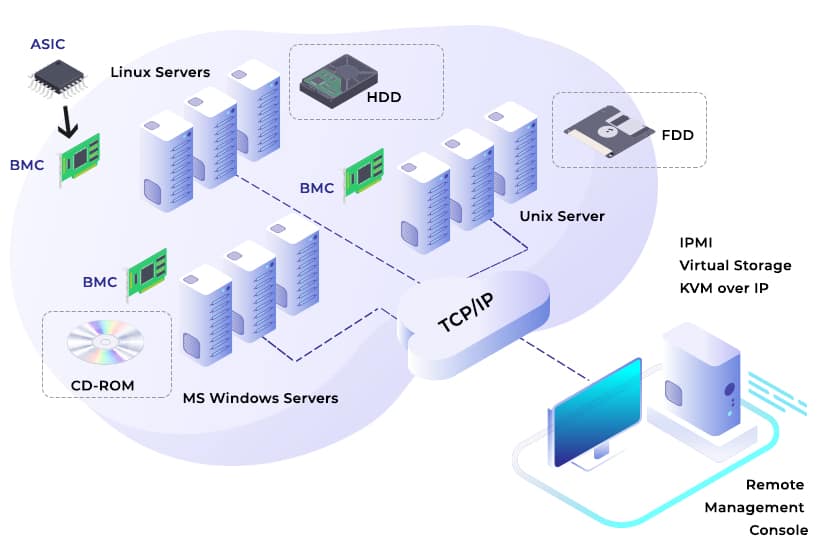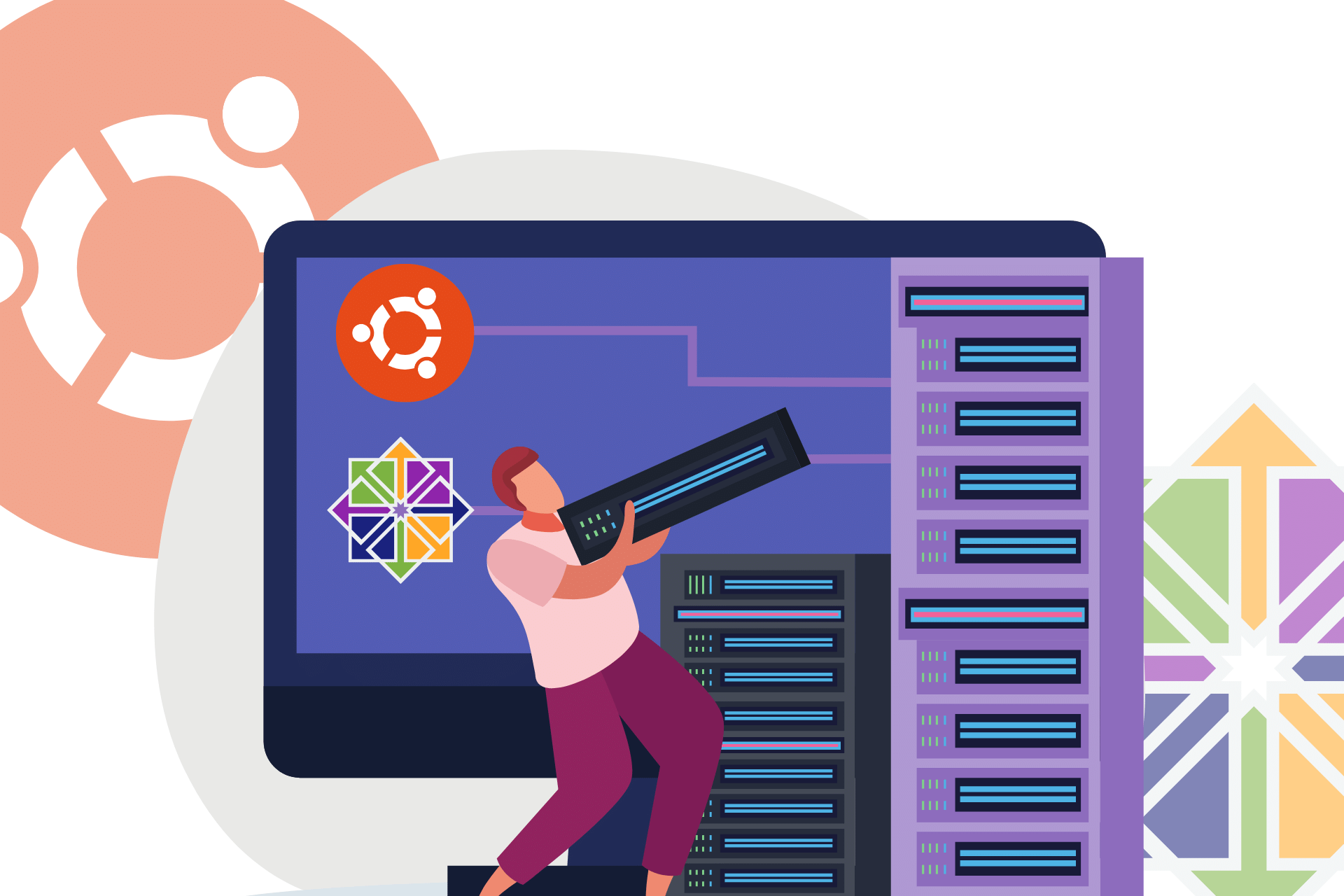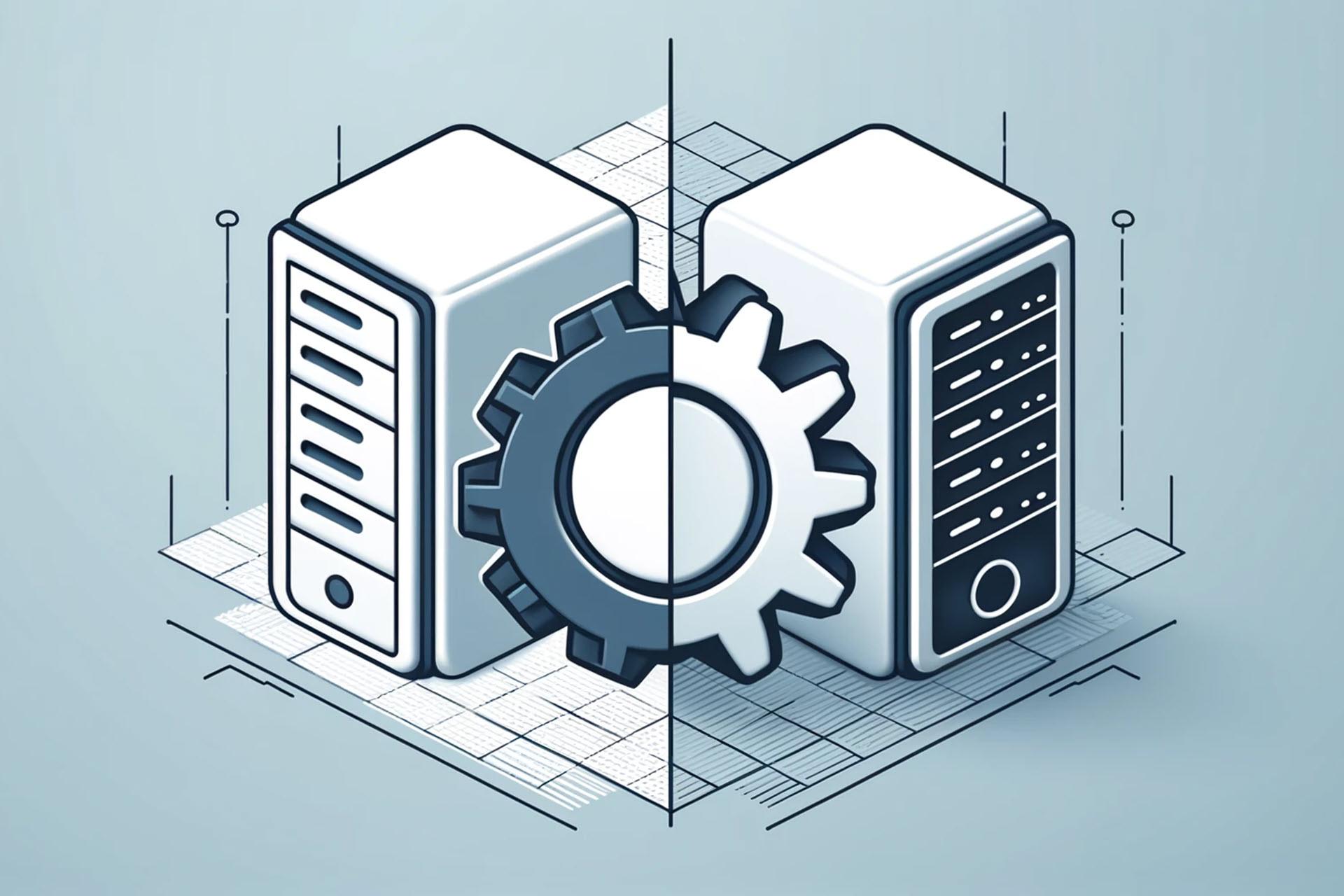Managing servers in a geographically dispersed network is a significant logistical challenge. IT professionals often need to troubleshoot issues on machines that are miles away, with restricted access and limited options for diagnosis and repair.
Intelligent Platform Management Interface (IPMI) addresses this issue by enabling remote management, regardless of location, operating system, or health. Whether the server is in the next room or halfway around the world, in a state of full operation or facing failure, IPMI empowers administrators to perform critical tasks remotely, 24/7.
This article provides a comprehensive overview of IPMI and its core functionalities.
What Is IPMI?
IPMI is a protocol for remote computer management that enables operations independent of the system's CPU and operating system. It allows direct interaction with a computer's hardware for various management tasks.
IPMI gives authorized administrators the ability to:
- Monitor server health, including temperature, fan speed, and power supply levels.
- Troubleshoot by remotely restarting servers during system freezes or errors.
- Access and adjust hardware settings, update operating systems, and firmware.
- Receive alerts for issues like overheating or power failures.
Most modern servers from manufacturers such as Dell, HP, Intel, and Lenovo include IPMI functionality, typically without extra cost for basic features. Some advanced options or upgrades may be available for an additional fee.
Our bare metal servers include built-in IPMI. Contact us today to get a quote!

How Does IPMI Work?
At the heart of IPMI is the Baseboard Management Controller (BMC), a specialized microcomputer embedded within the motherboard of servers and other computer systems. This microcomputer is directly linked to the system's hardware components, utilizing sensors and predefined tasks for constant monitoring and management.
IPMI consists of standardized protocols that outline the methods for remote communication and management of the BMC. To understand the relationship between BMC and IPMI, consider the analogy of a car and its steering wheel. The IPMI acts as the steering wheel, sending commands to the BMC, which functions like the car's engine.
Commands issued via IPMI can range from powering on the server to monitoring its internal temperature or initiating firmware updates. Upon receiving these commands, the BMC translates them into actionable tasks, leveraging its hardware access to execute the instructions. Once an action is completed, the BMC reports back through IPMI, delivering the outcome of the command to the administrator.
While IPMI includes software components, it is essentially a set of hardware-based specifications for server management. It defines the communication framework between a server's hardware components and external management tools, blending hardware interfaces with software elements.

IPMI Components
An IPMI system comprises several key components, each vital to its overall functionality.
- Baseboard management controller (BMC). The BMC is a microcontroller that manages and monitors the system's hardware independently of its operating system.
- Intelligent Platform Management Bus (IPMB). This communication framework facilitates interactions between IPMI components. It plays a key role in system monitoring by supporting sensor data collection and the execution of control commands.
- IPMI memory. IPMI memory stores sensor data, configuration settings, and event logs. This information facilitates diagnostics and recovery processes even during system failures.
- Dedicated management networks. These networks are designed explicitly for IPMI traffic, providing a reliable channel of communication with the BMC.
IPMI Features
IPMI has a suite of features that enhance remote management and monitoring capabilities.
- Out-of-band management. This feature enables the remote management of servers independently of the operating system's status. It is fundamental for performing firmware updates, troubleshooting, and executing recovery procedures without the need for direct physical access to the hardware.
- Hardware monitoring. IPMI provides real-time tracking of critical system parameters, including temperature, voltage, fan speed, and power consumption. By monitoring these metrics, IPMI helps quickly identify and address potential issues before they escalate.
- Event logging. Through the System Event Log (SEL), IPMI records meaningful system events, offering a valuable resource for post-event analysis and troubleshooting.
- Remote power control. This feature offers server administrators granular control over their equipment's power state from a distance. Functionalities include turning devices on/off, performing resets, and cycling power for system management and recovery.
- Virtual media. IPMI enables mounting remote storage devices as though they were physically connected to the server, facilitating tasks such as remote operating system installations.
- Security features. IPMI includes robust security measures to authenticate user identity and control access permissions, ensuring only authorized users can access management functions. These measures include, for example, setting user privilege levels and requiring strong passwords to prevent unauthorized access.
IPMI management relies on the IPMItool utility. For installation instructions and available commands, consult our guide on how to install IPMItool on Ubuntu or CentOS.
IPMI v1.5 vs IPMI 2.0
Since its introduction by Intel in 1998, IPMI has evolved significantly. IPMI v1.0 laid the groundwork for the system with basic functionalities accessible via a dedicated serial connection.
Over time, Intel, along with hardware vendors such as Dell, HP, and Cisco, developed IPMI to enable it to integrate seamlessly across diverse hardware platforms. This collaborative effort has solidified IPMI's role as a unified management solution, simplifying the oversight of multi-vendor environments by ensuring compatibility across various server models.
At present, the landscape of IPMI is defined by two prominent versions: 1.5 and 2.0. Although both versions are in active use, IPMI 2.0 is distinguished by its advanced features, heightened security measures, and superior performance, making it the preferred option for modern server management.
The table below highlights the differences between IPMI versions 1.5 and 2.0.
| IPMI v1.5 | IPMI 2.0 | |
| Authentication methods | Basic authentication (user, password) | Enhanced authentication methods (two-factor authentication) |
| Security | Limited security features | Enhanced security features |
| Encryption | Weak or no encryption | Supports strong encryption (AES) |
| LAN access | Single LAN channel | Supports multiple LAN channels |
| Web interface | Optional, less user-friendly web interface | Improved web interface and HTML5 support |
| Serial-over-LAN (SOL) | Limited support | Enhanced SOL features |
| Event logging | Basic event logging capabilities | Improved event logging and alerting |
| Compatibility | Widely adopted in older hardware | Designed for modern hardware |

Benefits of IPMI
IPMI stands out among remote server management tools with these major advantages.
Predictive Monitoring
IPMI excels in its ability to continuously monitor server health, using predefined thresholds to issue alerts when these are exceeded.
Predictive monitoring allows for the early detection of potential system issues and facilitates speedy intervention. This capability minimizes downtime and significantly reduces the operational costs of unexpected failures.
Independent, Intelligent Recovery
Unlike software-based remote management tools that depend on the operating system, IPMI functions independently by communicating directly with the BMC.
This independence ensures that IPMI remains fully operational even when the server's operating system crashes, enabling administrators to diagnose and address issues remotely. Recovering systems without OS dependency is crucial for maintaining business continuity and reducing recovery time in demanding environments.
Vendor-Neutral Universal Support
One of IPMI's key strengths is its vendor-neutral design, which allows for compatibility with hardware from different manufacturers.
This flexibility ensures that IPMI can be seamlessly integrated into diverse hardware environments, simplifying management across multi-vendor systems and avoiding the pitfalls of proprietary solutions.
Agent-less Management
IPMI's design allows for direct adjustments to BIOS settings and other configurations without the need for operating system access or specific software agents.
This agent-less approach streamlines the management process, making it more straightforward and less dependent on software configurations or permissions.

Disadvantages of IPMI
Despite its robust server management capabilities, IPMI is not without its drawbacks. These challenges are significant compared to other solutions, especially in terms of cybersecurity, configuration, and maintenance.
Cybersecurity Challenges
Historically, IPMI has been criticized for its security vulnerabilities, particularly the earlier versions before IPMI 2.0. These vulnerabilities could expose systems to cyber attacks by allowing unauthorized access to sensitive information or complete control over the server.
Although IPMI 2.0 and recent updates have strengthened security through encryption and better firewall integration, the inherent risk necessitates continuous vigilance and adherence to cybersecurity best practices.
Configuration Complexity
Setting up IPMI is challenging, particularly in environments with complex network configurations. For instance, aligning IPMI settings with existing network configurations might require elaborate adjustments, including BIOS resets.
This complexity demands a higher level of technical expertise and increases the risk of misconfiguration, as an inadequate setup can inadvertently create security vulnerabilities.
Maintenance and Update Risks
Applying updates to IPMI firmware is crucial for security and performance, but carries risks. Updates can occasionally cause network disruptions or configuration issues, particularly with port settings on the motherboard.
These issues often require system reboots, causing temporary interruptions to operations. You must carefully plan and test updates in a controlled setting to minimize impact on server availability.

The Expansive Reach of IPMI
IPMI has become a foundational element of server management, overcoming the limitations of a traditional data center. Its ability to facilitate remote access, predictive monitoring, and system recovery has made it crucial across diverse applications and industries.
In telecommunications, where uptime is vital, IPMI simplifies the management of embedded systems, guaranteeing stability and reliability. Similarly, for renewable energy installations, frequently located in harsh and remote environments, IPMI ensures continuous operation and maintains efficiency.IPMI has also found relevance in high-performance computing and research and development workstations, where it provides the control, stability, and diagnostics capabilities demanded by these environments.
Despite the challenges, IPMI remains a key player in the toolkit of IT professionals, empowering them to ensure system integrity and reliability across diverse computing landscapes.



